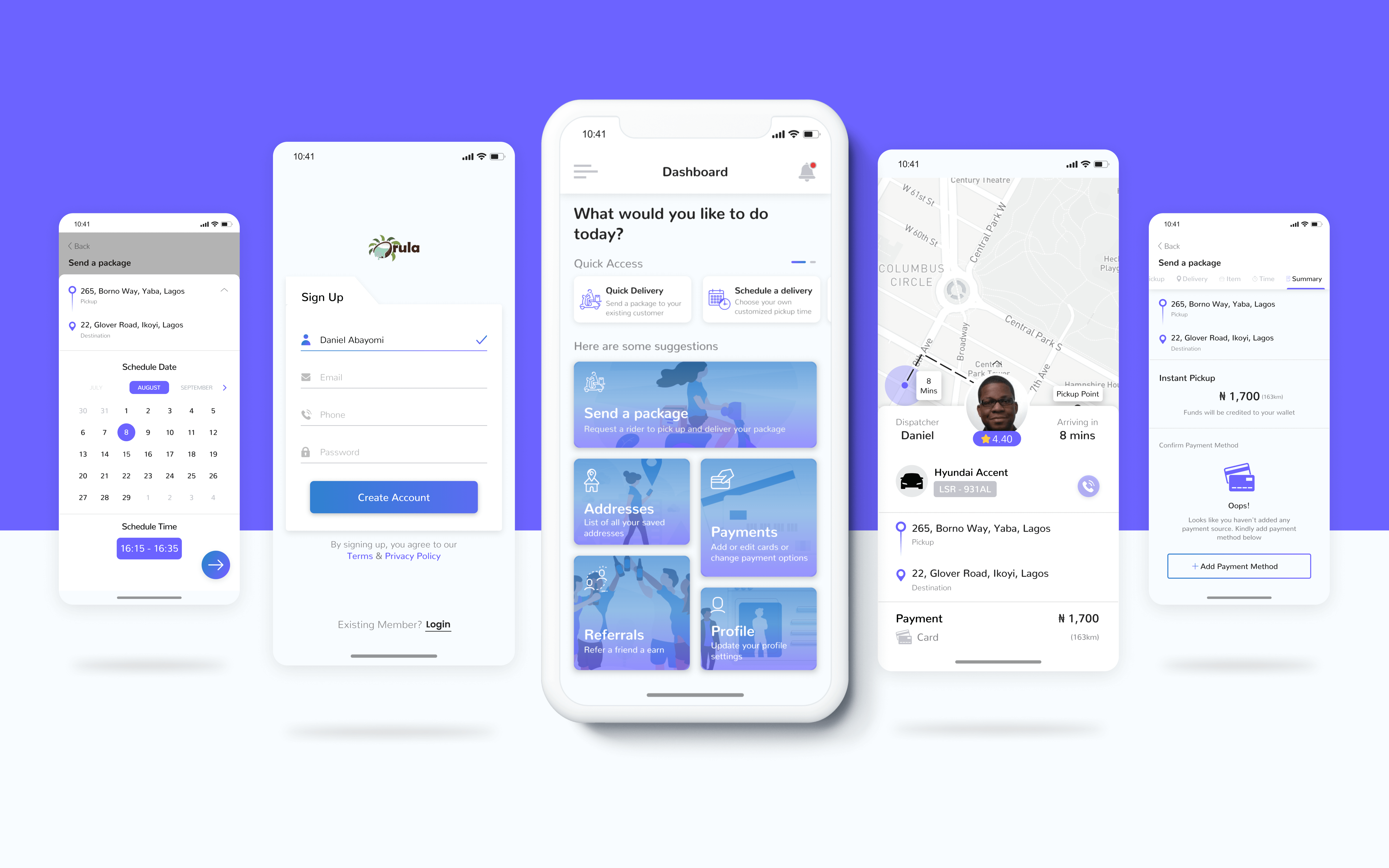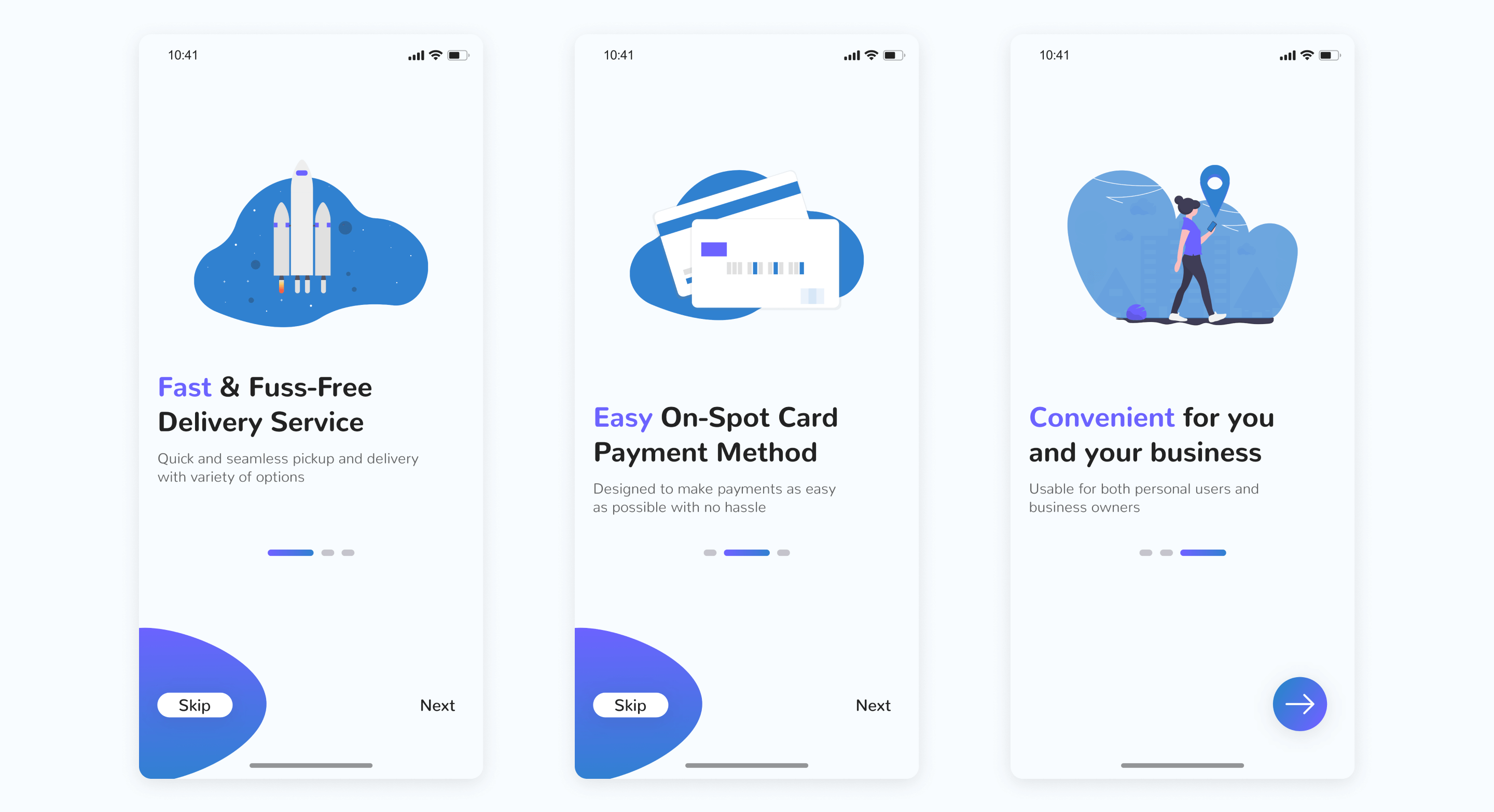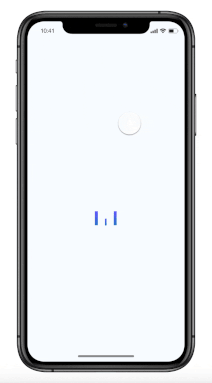Orula Logistics UX Case Study
role :
Solo Product Designer
Interaction Designer
length :
5 Weeks
tools used :
Zoom
Sketch & Invision
problem statement.
So the major problem preceding the invention of this product was that users needed a way to send out parcels seamlessly, at a transparent calculated fee and process multiple parcels at a go.
I had a conversations with some SMEs and several group of individuals who use services like this to gather some insights.

the solution.
Orula Logistics App is a delivery application aimed to solve the common problems that individuals and organizations face when sending out parcels. The idea isn’t new in the market but this app clearly solved some issues currently faced by similar logistic companies. The company is a startup based in Abuja, Nigeria, who currently runs a manual process of delivery service. The goal is to automate the system, with a strict focus on the user-experience and business requirements. The application aims at connecting users to the closest dispatch riders available around them.
the context.
I was more than excited when i was contacted to design the application, as earlier this year i also designed a logistics mobile and web application for Funnel Logistics Technologies (Funnel App on Playstore). It was only until i had a chat with the client that i figured out that the business model was different and this product required a different approach. I planned to create two mobile apps, one for senders and the other for dispatch riders. Also an admin that manages all events and activities of the overall system which i built in React Js.
Target Audience:

Project Goal:

research.
I interviewed about 12 people (calls, chats and physical interviews) who were potential target users to know their views and experience of using existing similar applications and to know their pain-points and improvement suggestions. The target audience were basically regular individuals, shop/business owner, online vendors and manual delivery logistics companies. The result from the interview were as follows:
- 5 business owners use the manual process but had some issues with delivery time and sometimes the logistic companies cancels a delivery due to unknown reasons. Therefore they have to wait an extra day or more before they get their parcels delivered.
- 4 regular day-to-day individuals seldomly use an online delivery service to send out parcels but often get stuck knowing the accurate weight of their items which is always a required field to fill when making a request. Now the logistic company always have to send them a weight update with the price difference and this is time wasting.
- 3 random users often do not have a delivery dispatch rider that can come to pick up their item at that time which they need their parcels sent. They are always told to book a request a day or more before time so as to allocate a dispatch to their area to pick up the item.
key challenges.
Product offering matter
User preference for different logistic services mostly depends on how the business is run and how these companies tend to their daily needs. Most users tend to use a familiar delivery app and others just stick to the manual process of sending out parcels which can be tasky at most.
Accurate delivery estimation
Every user loves accuracy and honesty. Sometimes a user’s decision is influenced by giving them options that is narrowed down in their favor, hence, a close estimation of time, distance and price altogether can improve this. Users may get frustrated when an order fails, is postponed, or timing estimate exceeds the range pre stated.
Pricing and rates
People usually stick to services that they are accustomed to, and this include prices. They are more price sensitive to logistic services that they are familiar with. Designing a system that attracts the right customers for the business without distrupting the business aim.
Trust, insurrance And security
Majority of users are usually skeptical as to safety of their parcels and a money-back guarantee on said parcels if things doesn’t go as planned. Also the idea of debiting the user before service is rendered or allowing a dispatch rider complete a delivery before assurance of payment is made is one big challenge i ensured to solve in this project.
user persona.
Next, I used all of the qualitative data i gathered during the research process to create two personas, Jamal and Bola.
persona 1:

persona 2:

swot competitive analysis.
Competitve analysis is an exploration of the companies in a given sector or market niche that are competing with a potential product or services for market share. Usually it helps in understanding what competitiors are doing right, their strength, their lapses and weakness, but most importantly a way to improve a product to achieve competitive advantage for both the business and customers. I carried out a research that carefully compares different logistics applications that are similar to what i intend to design and equally analyse the business features and requirements intended for Orula, to see how this research can help in shaping out a better experience for the users and for their business.

modeling the solution.
I’m not entirely sure that the title above matches up to what i intend to do here but it sure helped a lot in crafting out the problems more and a better presentation of how i intend to solve those problems with my research and design. I’ve prepared some use cases of sending out packages for delivery from the user point of view.

User fLow:

paper wireframes.
I ran through 4 wireframe iterations before i finally figured the best way to come up with a solution visually. I was unable to sketch the wireframes digitally because of time constraints in the deliverables (the client wanted to launch-to-market as soon as they could).

Typography:

Color scheme:

onboarding.
Simple swipe to learn more onboarding screens to let customers know the benefits of using the app. Also the onboarding screens helps depicts the message, using the brand color(the client are still rebranding so the logo is pending) and illustrations.

Simple login and signup pages:



next